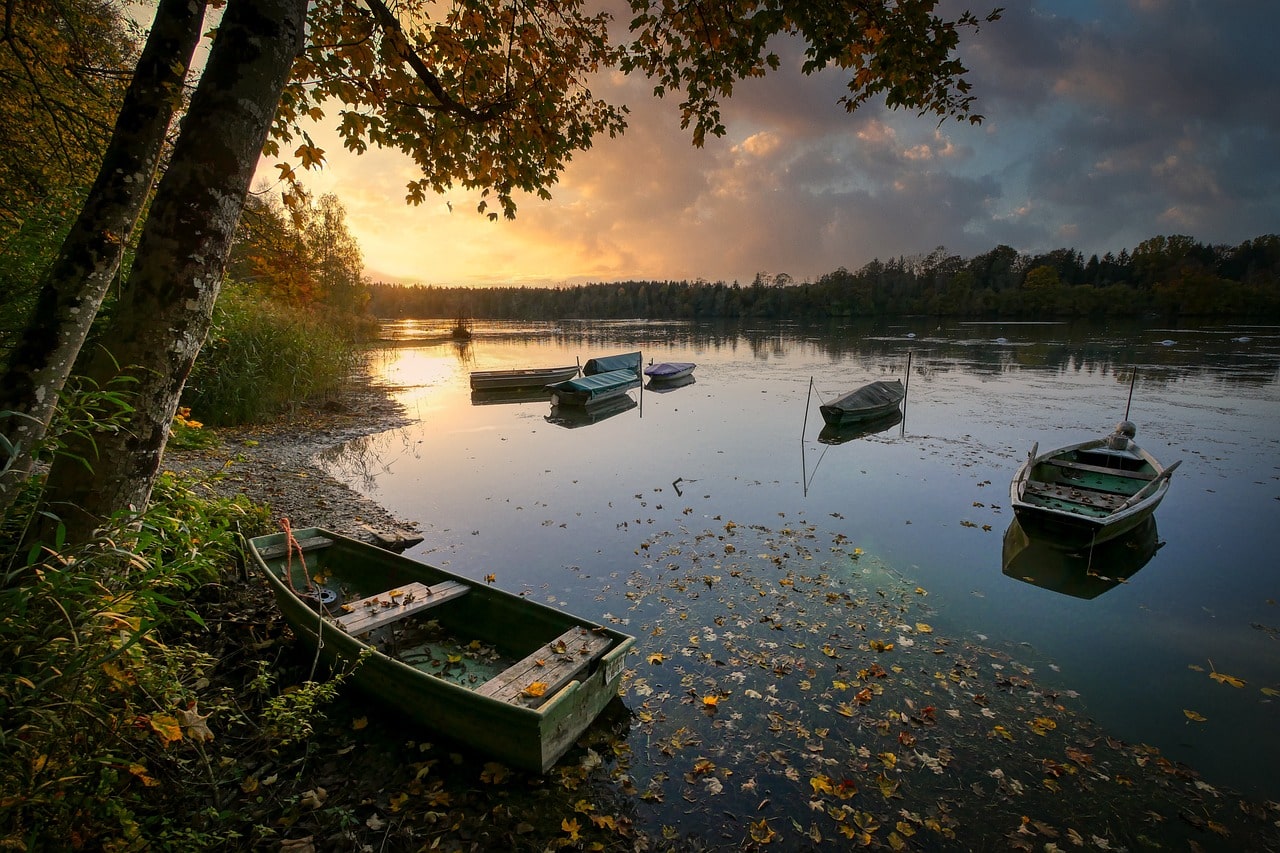Three reservoirs along the Little Tennessee River in northeastern North Carolina and southeast Tennessee offer spectacular views while tucked away in the breathtaking wilderness of the eastern United States. The aluminum smelting facilities of Alcoa, Inc. rely heavily on the resources of Cheoah Lake, Calderwood Lake, and Chilhowie Lake, collectively referred to as the Finger Lakes of the South. Situated on the border of the Cherokee National Forest and the Great Smoky Mountains National Park, these three reservoirs hold back around 3000 acres of water over roughly 30 miles of the river, creating an enthralling ‘stairstep’ effect.Fontana Dam and Lake extend 29 miles along the Little Tennessee River, just above Cheoah Reservoir. Initially designed as a fourth hydroelectric unit for Alcoa, Fontana Dam was built by the Tennessee Valley Authority during World War II instead. With the ability to regulate water levels in all four reservoirs, Fontana Dam forms a unique bond between the TVA and Tapoco, Alcoa’s hydroelectric division. The peaceful shores of the Finger Lakes of the South remain undeveloped, offering a serene escape for visitors. Primitive campsites dot the coastline, some accessible solely by watercraft. Each lake features launches suitable for small fishing boats, canoes, and kayaks. The dams create tranquil pools of water teeming with fish, surrounded by wooded and rocky shorelines. Limestone bluffs and gentle slopes, shaded by lush trees, enhance the area’s scenic beauty. The lakes are renowned for their deep, clear, and cold waters, which makes them sought-after destinations for trout fishing enthusiasts. Cheoah Lake and Calderwood Lake, the southern lakes of the trio, boast thriving coldwater fisheries, while Chilhowie Lake offers a cooler fishing experience. Regular water releases from underwater penstocks maintain high oxygen levels that support trout populations. The Tennessee Wildlife Resource Agency periodically stocks rainbow trout at Calderwood and Chilhowie Lakes; North Carolina is responsible for filling Cheoah Lake. Calderwood Lake, the smallest at 541 acres, is located where Tennessee and North Carolina share a state border. Despite being wedged between the other two finger lakes, Calderwood Lake stands out as the deepest, reaching depths of up to 190 feet in the original river channel. Anglers and paddlers often note the notably cold water temperatures in this lake due to the rapid cold water influx from Cheoah Lake above the dam. The scheduled water releases are closely watched by savvy fishermen looking to capitalize on warmer water periods conducive to trout feeding., When the dam at Calderwood Lake was completed in 1930, a reservoir with jagged, steep edges was created. This lake supports a diverse range of game fish, including rainbow trout, brown trout, brook trout, lake trout, largemouth bass, smallmouth bass, black crappie, and rock bass. Under the reciprocal agreement between the two states, boat anglers can use fishing licenses from either state. For shoreline anglers, the correct state permits are a must. Calderwood Lake offers limited road access, with the upper end near Cheoah Dam providing the main entry point amidst rugged terrain. Adventurous visitors are rewarded with excellent paddling experiences, access to scenic primitive campsites via water, and the opportunity to explore small waterfalls along woodland trails. As the uppermost of the Finger Lakes of the South, Cheoah Lake is situated directly below Fontana Dam, constructed in 1919. This lake remains undeveloped, with nearby Fontana Lake featuring a small village, campgrounds, and resorts. The picturesque 644-acre Cheoah Lake is a haven for trout, largemouth bass, smallmouth bass, crappie, and rock bass. A scenic highway runs alongside the lake, offering breathtaking views for visitors. Cheoah Lake can be accessed from a single boat launch ramp near Fontana Dam, with rustic campsites available along the shore. Located entirely within North Carolina, Cheoah Lake attracts canoe and kayak enthusiasts with its serene waters. A canoe portage around Cheoah Dam allows a seamless transition to Calderwood Lake. Both Cheoah Lake and Calderwood Lake are remote, requiring a journey of about 30 miles from the nearest sizable towns. Traveling to Cheoah Dam from the north entails a scenic yet challenging drive along US 129, known as the ‘Tail of The Dragon,’ popular among motorcyclists. The numerous country stores along the route offer refreshments and stories of amusing incidents involving inexperienced truckers. Chilhowie Lake, the northernmost of the trio, saw its dam construction completed in 1957. This lake enjoys easier access than its counterparts, boasting two beaches, picnic areas, boat launches, and fishing piers across its expansive 1734 acres. Chilhowie Lake is near the Great Smoky Mountains National Park border and the Cherokee National Forest. It provides excellent trout and bass fishing. The lake’s shallowness, with depths reaching about 50 feet, makes it a convenient and popular day trip destination for visitors near towns like Maryville, Lenoir City, and Louden. Chilhowie Lake stands out with its wider expanse and proximity to nearby towns, making it a more accessible option for day trips. Maryville offers convenient lodging options for visitors by offering hotels, motels, and guest rentals. The area surrounding the Finger Lakes of the South holds a rich history, with ties to the Cherokee people and notable battles that impacted their heritage. The submerged Cherokee town of Chilhowie lies below the lake’s waters, honoring the legacy of the region’s indigenous inhabitants. Tales of moonshiners and folklore further enrich the area’s history. While limited real estate opportunities exist overlooking the Finger Lakes of the South, strict regulations prevent construction close to the shores. In 2012, Alcoa Inc. announced plans to transfer ownership of the reservoir system and its hydroelectric capacity to a renewable energy provider. Despite potential changes in ownership, the pristine beauty and recreational offerings of the Finger Lakes of the South will be cherished by future generations.* Statistics data pertains to Chilhowie Lake and is sourced from Alcoa’s official sites.

